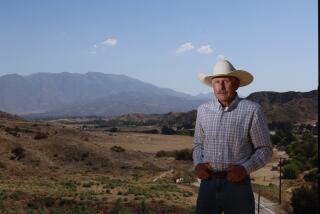Efforts to Save Torrance Train Depot Suffer Setback
TORRANCE — Efforts to save and restore the old Pacific Electric Railroad depot, once the ornate gateway to this city’s industry for thousands of workers, suffered a setback this week when a state agency denied the city’s request for a grant to help purchase the property.
However, the City Council, acting as the Redevelopment Agency, directed the city staff to investigate appealing the denial, and to ask the owner of the property, Southern Pacific Co., if it would dedicate the land to the city.
The staff was also asked to develop a financial package to encourage a private developer to purchase and rehabilitate the property on the corner of Torrance Boulevard and Cabrillo Avenue.
Robert Barry, a land agent for Southern Pacific, could not be reached for comment. However, Tom Progen, a city planner, said that in past discussions the railroad has said it considers the property as surplus, and that its only interest in it is monetary.
Nearly three years ago an independent appraiser for the city and Southern Pacific placed the value of the 3,500-square-foot structure and nearly an acre of land at $588,000.
Around 1912, a Southern Pacific spur line from the main San Pedro-Los Angeles line was established at the request of Union Tool, which wanted a full-service, standard-gauge link to the nation’s rail network. The depot, built in that year, served the spur line.
The depot was designed by prominent California architect Irving Gill. The one-story structure with a dome top--which is gone now--was built of hollow tile and brick with a surface layer of concrete. It featured a Spanish mission-style gable with parapets. Four highly stylized columns graced the depot’s entrance. A mosaic clock adorned the facade of the parapet.
By July, 1916, the Pacific Electric Railway had built a line to Torrance and had moved its railroad-car construction and repair shops from Los Angeles to a 125-acre site in Torrance.
Thousands of workers came in on the train to work in the early factories that established Torrance as a major industrial town. The train was significant in the growth of the city because it made it possible for workers living throughout Los Angeles to work in Torrance, which had few houses at the time.
Changing City
But gradually the city changed from an industrial town into a major commercial and financial center. The railroad stopped using the depot in the 1950s and converted the structure into office space, which was used until about 1981. The loading dock area in back remained in use until it too was abandoned recently.
“It is the city’s objective to replace those architectural features which have been removed--dome, clock, red-tiled roof, wings, everything,” Progen said. “All new material will match the material being replaced in its composition, color and texture.”
Ironically, the Office of Historic Preservation of the state Department of Parks and Recreation notified the city Monday that a request for $296,273 from the California Park and Recreational Facilities Act of 1984 was denied because the depot had deteriorated too much, making it ineligible for the National Register of Historic Places.
Not Affordable
Among conditions for the state grant are that the building be placed on the National Register, that local governments provide a matching grant and that the property be used for nonprofit purposes.
Parks and Recreation Director Gene Barnett said his staff is still studying possible uses of the depot if the city acquires it. Barnett said the Torrance Historical Museum could be moved to the depot, which would make the old Post Avenue library that the museum now occupies available to the nearby Bartlett Senior Citizen Center.
Progen said the city cannot really afford to buy the property even with the grant, but will do so to preserve one of the city’s earliest buildings.
“We want to save the depot,” Progen said. “If it comes down to losing the depot or spending $300,000, we’re saying we will spend the $300,000.”
The city, however, held up the appropriation of nearly $300,000 from its general fund redevelopment reserves, which has a balance of more than $1 million, until it is decided how the site will be bought.
Worth More Vacant
Progen said the city would prefer that a private developer undertake the restoration because any ensuing tax revenue could be returned for other projects in the Downtown Redevelopment Project area. However, he said the city will probably have to assist a developer financially because the asking price for the land makes it unlikely that a developer could realize a satisfactory financial return on the investment.
“From a strictly monetary view,” Progen said, “the site is worth more vacant--the depot detracts from its economic value rather than contributes to it.”
Progen said the assistance package--which is expected to be ready for City Council approval in about 60 days--could include loans, an outright grant, a tax break on the purchase or assistance with the restoration.
Progen said that in the past developers have expressed an interest in turning the depot into a restaurant or retail stores.
More to Read
Sign up for Essential California
The most important California stories and recommendations in your inbox every morning.
You may occasionally receive promotional content from the Los Angeles Times.









